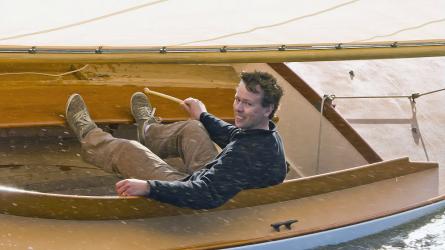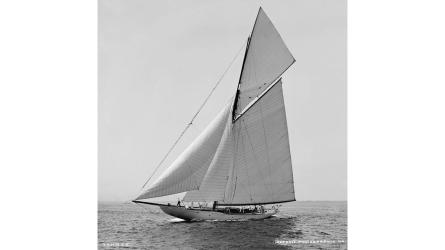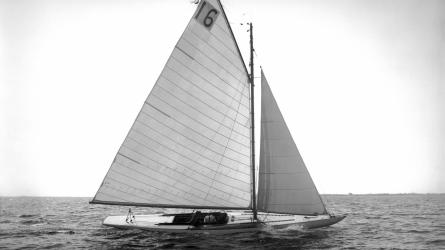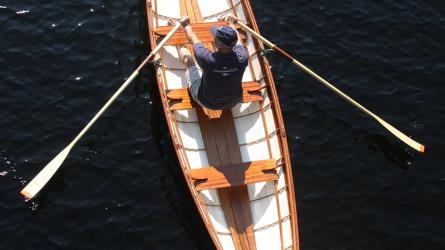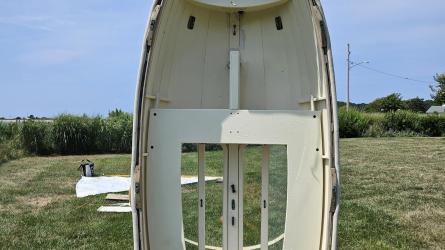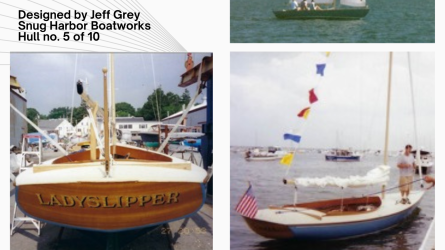Visiting Panamanian Ruins By Boat
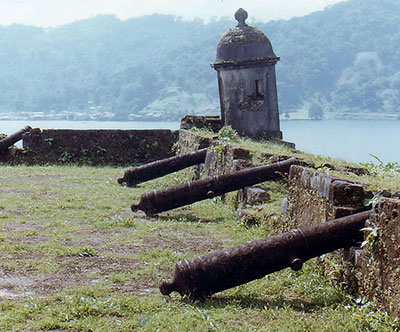
I sailed FISHERS HORNPIPE, my first cruising sailboat, from California to Florida in 1979/1980, through the Panama Canal. On the Caribbean side of the Canal, I was told that one of the prime places to visit was Portobelo, site of a historic Spanish fort, from which Central and South America were plundered for gold, silver and slaves.
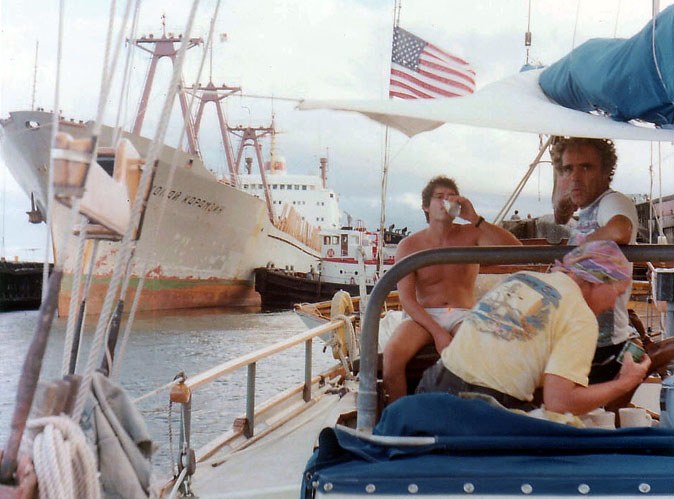
Transiting the Panama Canal in FISHERS HORNPIPE in late 1980 with crew Tage With, and line-handlers Cal and Janet from INDIAN PRINCESS.
Portobelo was also on the way to the San Blas Islands (home of the Kuna Indians), half in Panama and half in Columbia—also a prime place to visit. And by working our way east along the coast, we would have a better point of sail when departing to sail north.
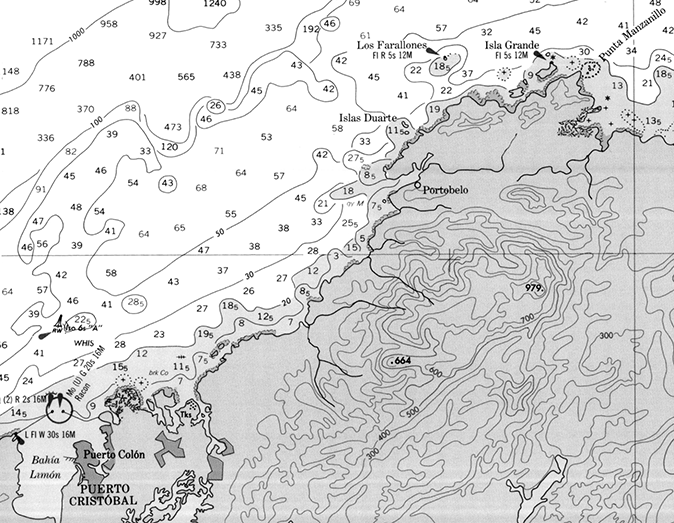
The east portal to the Panama Canal (left), to Punta Manzanillo (right), with Portobelo between
Our arrival in Portobelo was well-timed in that it coincided with the Black Christ Festival, a crucial yearly event in Portobelo, evidently rarely witnessed by outsiders.
From my log:
We were in the church when the magnificent life-size black Jesus and His cross were lifted up by many bearers and slowly paraded, a few steps forward, a few steps back, through the town, and we were there when He returned. We were packed in like sardines, sometimes being held upright by the sheer press of hot, sweaty human bodies. We were among large throngs of worshippers, some of whom had walked the Los Cruxis Trail for days, many in purple robes and with shaved heads. Our white faces shone oddly among the thousands of black ones, reflecting the light from candles and magnificent fireworks.
We were told the Black Christ statue was shipwrecked here on its way from Europe to the Vicar of Peru centuries ago. There was a terrible plague at that time, and a handful of survivors waded out into the sea to salvage the wreck. They found the magnificent sculpture and dragged it ashore, and thereby ended the plague on the people. The sad eyes of the Black Christ showed, to me, the centuries of degradation and suffering of black people everywhere. His journey, the thousands of black people who traveled to Portobelo for this occasion, symbolized to me the birth of the age of the black man, of all third world people, at long painful last on the threshold of their inheritance of the Earth. Among these people—their sweat and smiles and handshakes and music and honest ways and the strength of their blood, I knew that Earth cannot help but be safer in their hands than it has been at the ineffective false-mercy and unflagging greed of the white man.
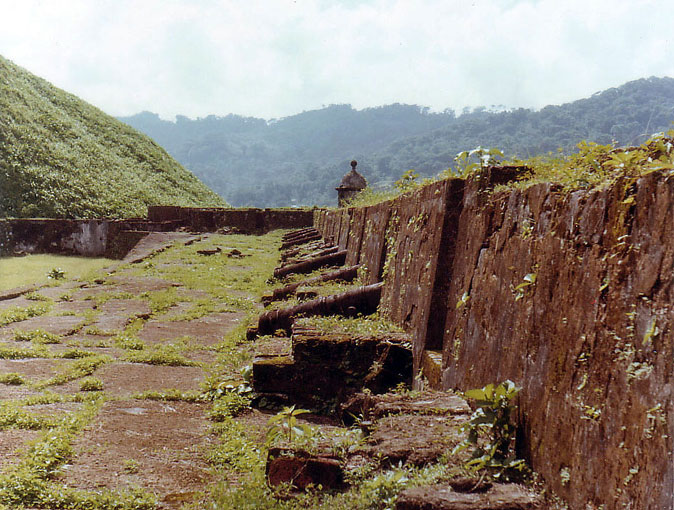
Portobelo represented the epitome of greed and cruelty of the Spanish Empire. It was here that stolen gold and silver were brought to be loaded aboard the Spanish treasure fleets bound for Spain—it was here where death and disease and murder ran rampant. Thousands of natives and slaves died on the Los Cruxis Trail carrying Spanish plunder. Sir Francis Drake died here of dysentery in 1596. Henry Morgan raided Portobelo in 1699, as did many other pirate and buccaneer fleets. The quantities of precious metals that passed through this port are legendary—every scoundrel on Earth had to have a crack at it.
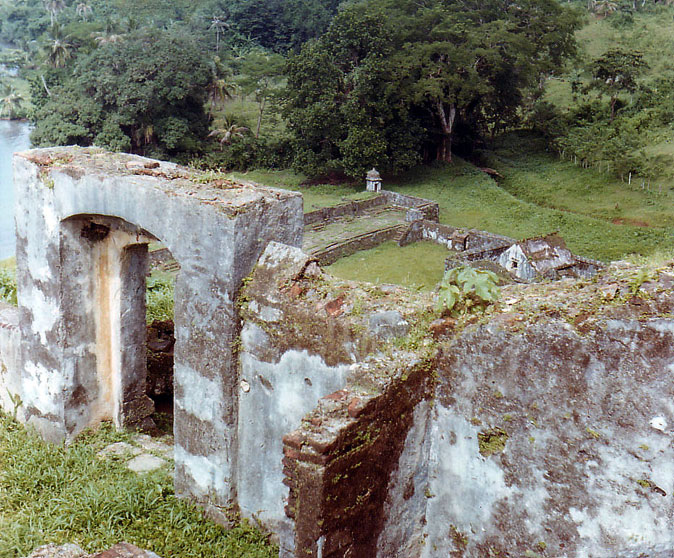
The morning after the [last night of the] Festival, I had to go ashore to search for half my crew. I found them passed out in hammocks in the villagers’ huts! The kind and generous people of Portobelo had slept on the ground so that their unexpected guests would be as comfortable as possible….
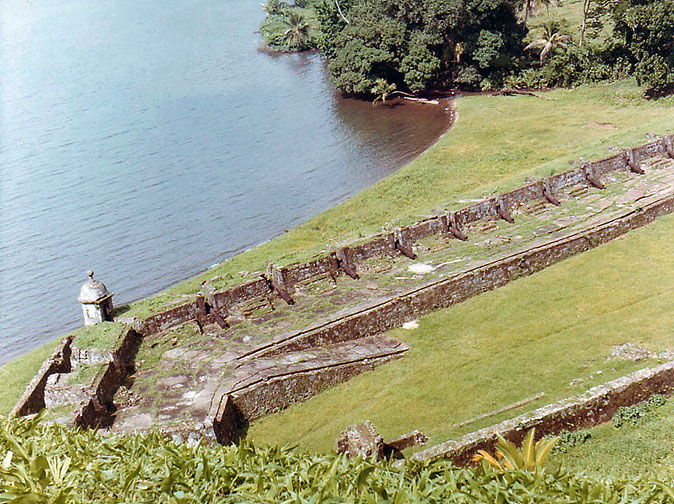
Moss grows on the undersides of the huge rusty cannons in the crumbling ruins of the fortress of Portobelo. Flowers and grass and huge land crabs and cow [dung] have taken over the garrisons which fought the ancient battles. The walls reek with history.
On November 22nd we rode the northeast trade wind out of the beautiful bay which Columbus first visited in 1501.
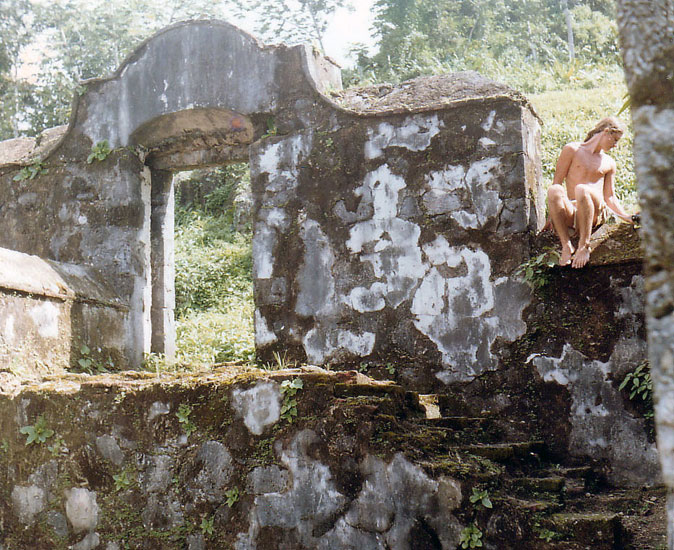
FISHERS HORNPIPE’s teenage first mate, Paul Newman.
I had an international crew on FISHERS HORNPIPE at that time: first mate Paul Newman, a teenager from New York; Tage With from Denmark; Anne Bertrand from France; and a charismatic couple—Jean-Paul from France and Silda from Columbia. We had some great adventures together! None of us had any money to speak of, and we lived on fish and local fruit, plus whatever we could make from flour and sugar. Rice and beans figured prominently in our diet. With all those different people on board, something was always cooking!
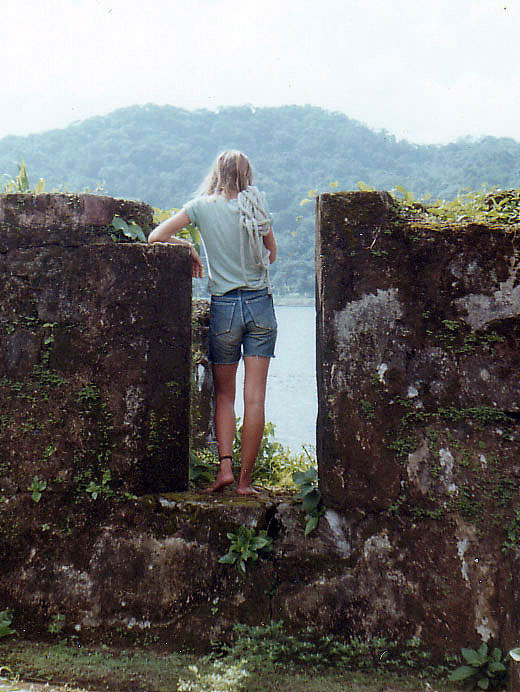
French crew Anne Bertrand contemplating Portobelo Harbor.
Cruising the coasts of Panama and Columbia was an experience I will never forget. The Black Christ Festival was one of the most moving events I have ever witnessed. I regret not taking any photos—I felt it might seem sacrilegious—and discouraged my crew from bringing cameras ashore during the Festival. There were only two other cruising boats at Portobelo, and consequently there were only about ten white people among the thousands of black people. And we were welcomed with open arms and great hospitality, which moved me to write the above log entry.
9/23/2014, Appleton, Maine
